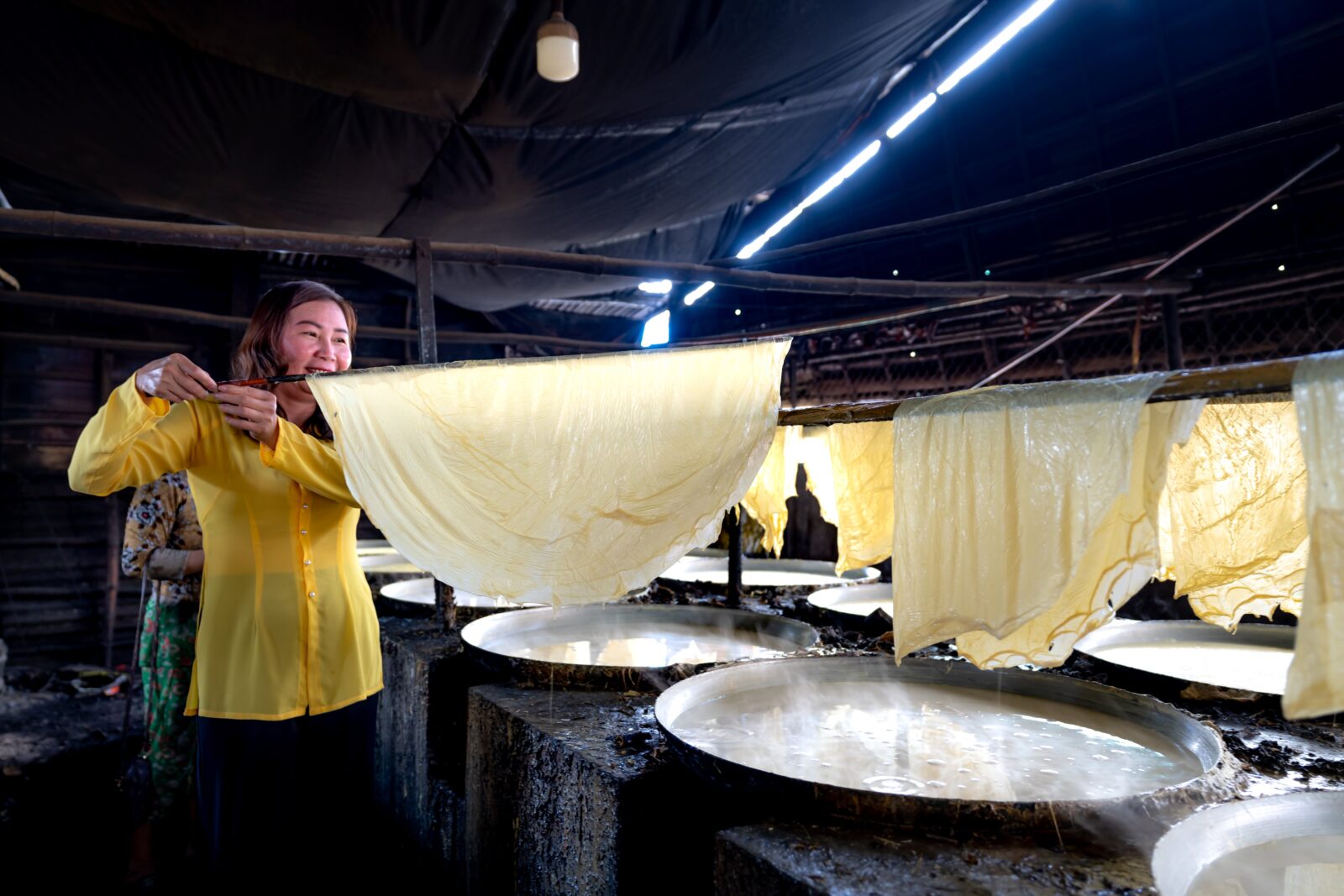Are you familiar with yuba? It’s not a trendy superfood or a mysterious kitchen secret. Instead, it’s a delightful by-product of soy milk that has been adding its unique flavor to kitchens worldwide for over a millennium.
Whether you’re a culinary enthusiast or just someone keen on exploring new and tasty flavors, yuba is an ingredient worth exploring. We’ll uncover yuba’s nutritional benefits and get to know its essential role in the world of cooking.

What Is Yuba?
Yuba is a sheet of coagulated soy protein that emerges on the surface of a hot vat of soy milk. Think of it as a culinary cousin to thinly sliced tofu, but bouncier and with a denser texture—courtesy of the aggregated soy proteins.
The Origin of Yuba
Mild, chewy, and boasting a nutty taste, yuba has been a fundamental ingredient in Chinese, Japanese, and various Southeast Asian cuisines for over 1,200 years. Its journey from China to Japan through the historical cities of Kyoto and Shiga has embedded it deeply in the vegetarian cooking traditions of both cultures.
How Is Yuba Made?
Creating yuba takes skill and patience. Soy milk is heated until a creamy yellow film emerges through protein coagulation and drying, resulting in the thin tofu sheet known as yuba. Once it is gathered using a bamboo skewer or dowel, the yuba sheet is ready for immediate enjoyment or extended air-drying for storage. Yuba makers use steam tables to heat sizable pans of soy milk, harvesting the tofu sheets simultaneously.
For home cooks, the process is surprisingly simple – heat soy milk in a nonstick skillet to 175°F, extract the yuba sheet with a wooden dowel, and let it hang for drying.
Different Types of Yuba and Where to Find Them
- Fresh: After yuba sheets form, they can be folded, layered, and sold in a fresh state. This fresh yuba is also available in marinated or seasoned forms and should be stored in a sealed container in the refrigerator to prevent it from drying out. Typically, fresh yuba sheets can be found in the tofu section of healthy, specialty, or Asian grocery stores.
- Dried: The more common version of yuba available is dried yuba. It can be found in the form of sheets or sticks, and is labeled as bean curd sticks, bean curd skin, dried tofu skin, fu zhi, tofu sheets, or bamboo tofu. Dried yuba is commonly sold in the dried goods section of Asian grocery stores and is also available online.
The Nutritional Benefits of Eating Yuba
Yuba, part of the tofu and broader soy foods family, is a powerhouse of essential nutrients that promote overall health. Here are just a few of the nutritional benefits that can come with eating yuba:
- Yuba Is Protein Rich: Soy foods, like yuba, include all nine essential amino acids and offer high-quality protein comparable to animal sources. When paired with resistance exercise, the soy protein in yuba can support strength and muscle mass growth.
- Yuba Contains Essential Nutrients: Suitable for low-carb, dairy-free, and gluten-free diets, yuba and other tofu products are rich in iron, calcium, and various vitamins and minerals that can deliver heart-healthy benefits.
- Yuba May Reduce the Risk of Certain Cancers: Research suggests a possible link between the consumption of soy foods, including yuba, and a reduced risk of breast, prostate, and gastric cancers.

How Can I Add More Yuba to My Diet?
Yuba can be incorporated into your cooking with ease. Some ways to cook yuba include:
- Stir-fry it alongside your favorite vegetables and seafood or thinly slice it for a gluten-free pasta-like dish.
- Enhance the crunch and flavor of salads by frying yuba slices, or use them as a garnish for grilled salmon.
- Fresh yuba readily absorbs flavors, making it a fantastic noodle substitute in salads, or a wrapper for fresh spring rolls.
- Rehydrating dried yuba is simple. Start by soaking yuba sticks in water for a few hours or rehydrate yuba sheets with a damp towel. Once rehydrated, they’re ready to use in various dishes from stir-fries to deep-fried preparations, adding a satisfying texture and enhancing the flavors of your culinary creations.
Add Yuba to Your Grocery List!
Whether you’re an experienced chef or a culinary newcomer, yuba provides an opportunity to diversify your meals with its unique texture and nutritional value. By embracing yuba, you can spice up your dishes, add nutritional value to your plate, and let it be the secret ingredient that turns your meals into a texture-rich adventure!
Yuba is just one ingredient in an array of nutritious, delicious, and sustainable soy foods.
Interested in adding more soy to your diet? Explore our index of soy-based ingredients!
